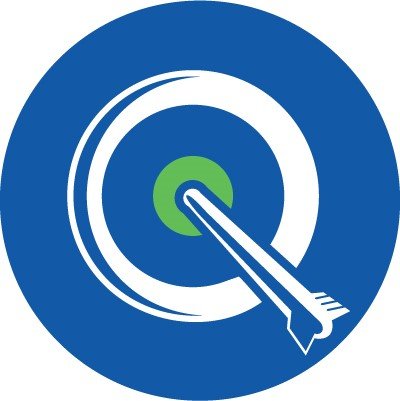What are the ISO 14001 Requirements? 2023 Update
Monitoring and minimizing environmental impacts is a high priority for companies all across the world, regardless of their industry. The requirements of ISO 14001 have been developed so that they can be applied to any business type, allowing all organizations to capitalize on the trusted reputation of the ISO standards to bring their companies into compliance for environmental excellence.
What is ISO 14001?
By outlining the basic elements of an Environmental Management System (EMS), the14001 standard provides the framework without dictating the exact path companies must follow to obtain certification. Through thorough exploration of their environmental impacts, proper planning, awareness, monitoring, and teamwork, organizations are able to make educated decisions specific to their business, using ISO as their guide.
The First 3 Clauses of ISO 14001
Similar to the requirements for ISO 9001, ISO 27001, and ISO 45001, the first three clauses of the ISO 14001 requirement help build familiarity through an overview of the standard, introductions to important reference information, and definition and explanation of key terms in the standard. The standard narrows in on the environmental aspects beginning in clause 4.
Clause 4: Context of the Organization
Before the work can begin, organizations must evaluate their current standing about environmental interaction. Every company faces different challenges – and those challenges are dependent on innumerable factors that are unique to each business.

Manufacturing organizations are faced with different environmental challenges than service-based companies. That’s why ISO 14001 was restructured to be less prescriptive and more inclusive, encouraging the exploration of all aspects of environmental impact.
Considerations for the Environment and Your Company
Companies must consider what aspects of their business can negatively impact the environment, internal and external environmental issues that could impact their company and management system, and legal and regulatory compliance obligations they may be subject to. Further, companies must consider the expectations and needs of their stakeholders – from investment partners to the communities in which they do business – to ensure they are addressing the environmental concerns of all interested parties.
Your Company and Environmental Impacts
The information you collect from this evaluation of your business will allow you to understand the context of your organization about your environmental impacts. Through that understanding, you will be able to develop a statement of the scope of your EMS which will define the aspects of your business that will be addressed by your management system.
Clause 5: Leadership
After the scope of your EMS has been determined, your leadership team will take the reins to provide direction, set goals, and assign responsibilities for the development of the system. Their commitment and participation are required by the 14001 standard, so it’s important to have full buy-in from your executive leadership team before beginning your work to create a culture of continued efforts toward environmental excellence.

Leadership Team develops Environmental Policy
Working together and with the understanding developed through context exploration, your leadership team will develop and define a company Environmental Policy. This policy serves as the overarching goal of your management system and should include language showing your commitment to pollution prevention, legal compliance, and stewardship to the earth. The policy will also state the name of the “environmental management representative” – the individual who will spearhead the creation and implementation of your new EMS – as well as any other key position appointments.
Upon its completion, the policy must be posted and clearly communicated to your entire team.
 Clause 6: Planning
Clause 6: Planning
Once your goals are set through your environmental policy, you will begin the planning phase of implementation of ISO14001 – the first step in the “Plan, Do, Check, Act” cycle that is so familiar to the ISO family.
Actual and Potential Environmental Impacts
You’ve already addressed the environmental aspects of your business through the context exploration. You must now evaluate which impacts are happening and which have the potential for happening. Actual and potential impacts require different actions (reactive vs. proactive planning) and your awareness of prevention is as important as your efforts for affect minimization and environmental damage reversal.
Identify Opportunities for Improvement
Identify your opportunities for improvement and develop plans to minimize the negative effects of those risks. Additionally, lay out your plans to meet the legal and regulatory compliance requirements faced by your business. Start by setting individual objectives for each aspect, and methodically laying out plans to achieve them within the EMS.
Address the Most Offensive Negative Environmental Impacts First
It’s important to note that even though you may have identified a litany of negative environmental impacts your company could make, it’s perfectly acceptable to start with only the most important and high-risk aspects, addressing them first within your EMS. After improving on them, you can then move down your list to the less-serious offenses. From energy use and emissions to pollution and waste management, your company will face unique and specific challenges.
Clause 7: Support
Once your plans have been established, you will need to ensure you have adequate resources, effective training and communication methods, and proper documentation in order to achieve your objectives, make progress with your EMS, and, ultimately, achieve ISO 14001 compliance.

What Education or Training Will Employees Need to Reach Environmental Objectives?
Think about the tools your team will need to properly implement your EMS and achieve your objectives. From formal educational efforts to simple on-the-job training, ensure that they are equipped with the knowledge and materials needed to achieve your environmental objectives.
Take the time to monitor their progress and measure their understanding – not only of their role and responsibility but of the greater goals of your EMS.
14001 Environmental Document Management
Again, the standard does not lay out specific requirements regarding how data is collected and stored, nor does it prescribe a specific method for evaluating the effectiveness of training or subsequent competence demonstrations. Your company will be responsible for determining what you document and how you store information. Be thorough, organized, and diligent, and remember that the documentation you keep will be your proof of compliance with the ISO14001 standard during your certification audit.
Stakeholder Communication
Finally, determine the methods of communication to keep your efforts (and the results of your efforts!) in the sightlines of your stakeholders. These communications should also be carefully recorded and kept within your EMS document management system for easy access.
Clause 8: Operation
Plan on how to Respond to Environmental Emergencies
Clause 8 is the smallest but most vital section of the ISO 14001 standard. It sets the groundwork for how you will plan for the control of your operations – both to meet your planned objectives and to properly prepare for and respond to environmental emergencies. This is the “Do” phase of the PDCA cycle – the phase when you implement the planned changes designed to help you achieve your objectives.

Minimizing Negative Impacts on the Environment
Minimizing negative impacts on the environment is the overarching goal of the entire ISO 14001 standard. Be diligent as you evaluate procedures, create documented workflows, and make changes to mitigate potential risks. Additionally, spend time on a staunch preventative maintenance program, setting a system of checks and balances that are routinely monitored so that non-conformances can be addressed as soon as they’re identified. Finally, develop an emergency response plan for major crises, such as chemical spills, accidental contamination, or fire.
 Clause 9: Performance Evaluation
Clause 9: Performance Evaluation
Once changes have been implemented and your team is working within the new EMS, you must begin to analyze the effects of those changes and the system as a whole.
Monitor and Measure Progress
Each process within the EMS must have a specific plan in place to monitor and measure its progress. This includes the evaluation of changes implemented to address your company’s compliance with regulatory and legal requirements. Through the internal audit process, keep close tabs on the performance of your processes and how they are working to achieve your environmental objectives. Record the data you collect and use it to prove your improvements.
The Benefits of Internal Auditing
The benefit of the internal audit process is that it allows your team to identify where your processes are still missing the mark, giving you the opportunity to make further corrections and work toward greater success.
The standard requires you to have a plan for how your management team will review and confirm the progress of your EMS, and routine leadership meetings can serve as an excellent forum for your top management to examine your system, ensure adequate resources have been provided, and confirm that the system is working toward improvement.
Clause 10: Improvement
Like all ISO standards, the focus of ISO 14001 isn’t on one-time efforts – it’s about creating an Environmental Management System that provides an avenue for long-term, continuous improvement.
Identifying and Addressing Nonconformities
The final clause in the standard outlines the requirements for the final phase of the PDCA cycle. It helps to define the process of identifying and addressing nonconformities in your EMS processes through root cause analysis and corrective action.

By continually examining the ways in which your business can improve your environmental impacts, you will naturally create better processes and minimize your footprint. Attention to continuous improvement won’t only allow you to eventually address all your known actual and potential environmental affects, it will also help you to identify problems you may not have considered before they occur.
When certifying to any ISO standard, it’s important to pay careful attention to the requirements and determine how they work within your specific organization. With so much room for interpretation, it can be challenging to know exactly what direction to take. Be diligent in your exploration and planning, and, if necessary, partner with an expert consultant who will help you navigate the nuances of ISO 14001.
To learn about certifying to ISO 14001 visit Core Business Solutions’ ISO 14001 page.



